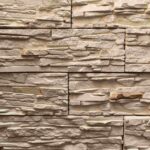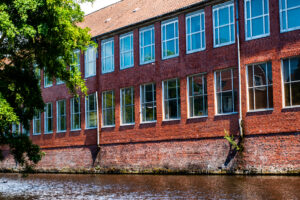Understanding Masonry Repair
What Is Masonry Repair?
Masonry repair involves the restoration and preservation of structures constructed using materials like bricks, mortar, and stone. Over time, exposure to the elements can cause wear and tear, making repair a crucial aspect of masonry maintenance.
The Significance of Masonry Repair
Masonry repair is not just about aesthetics; it’s about preserving the structural integrity of your building. Neglecting repairs can lead to more extensive and expensive problems down the road, such as compromised stability and water damage.
Common Signs of Masonry Damage
- Cracked or Deteriorating Mortar Joints: Mortar joints are the vulnerable points in masonry, and cracks or deterioration can compromise the structure’s stability.
- Loose or Damaged Bricks or Stones: Dislodged or damaged masonry units need prompt attention to prevent further issues.
- Water Infiltration and Staining: Moisture penetration can weaken masonry and result in unsightly stains.
- Uneven Settlement or Leaning Walls: These are signs of foundational issues that require immediate assessment.
Masonry Materials and Their Properties
Types of Masonry Materials
- Bricks: Bricks are versatile, durable, and come in various types, including clay and concrete.
- Mortar: Mortar is the binding material that holds masonry units together, and its composition significantly impacts structural integrity.
- Stone: Natural stone adds timeless beauty to masonry structures but requires specialized repair techniques.
Impact of Material Properties
The choice of materials plays a vital role in repair techniques. Matching new materials with existing ones is crucial for both structural and aesthetic reasons.
The Basics of Repointing
What Is Repointing?
Repointing, also known as tuckpointing, is a fundamental masonry repair technique. It involves removing deteriorated mortar from the joints and replacing it with fresh mortar. The goals are to restore the structural stability of the masonry and improve its appearance.
Step-by-Step Repointing Guide
Assessment: Begin by identifying areas that require repointing. Look for cracks, crumbling mortar, or areas where the mortar has become recessed.
Mortar Removal: Carefully remove the old, deteriorated mortar using appropriate tools to avoid damaging surrounding bricks or stones.
Mixing Mortar: Prepare a mortar mix that matches the composition and appearance of the original mortar. This step is crucial for maintaining the masonry’s integrity and visual continuity.
Application: Apply the new mortar to the prepared joints, ensuring even coverage and proper bonding.
Tooling: Shape the fresh mortar to match the appearance of the surrounding joints. This step requires skill to achieve a seamless finish.
Curing: Allow the newly applied mortar to cure properly, protecting it from excessive moisture during the curing period.
Choosing the Right Mortar Mix
Selecting the appropriate mortar mix is critical. Factors to consider include the type of masonry units, the environmental conditions, and the desired aesthetic outcome.
Identifying Repointing Needs
Inspection Tips
Regular inspections are essential for identifying areas in need of repointing:
- Visual Inspection: Look for gaps, cracks, or crumbling mortar joints.
- Moisture Detection: Investigate signs of moisture infiltration, such as efflorescence or staining.
- Sound Testing: Tap the mortar joints gently with a tool; hollow sounds may indicate loose or deteriorated mortar.
Importance of Mortar Joints
Mortar joints are more than just aesthetics; they provide structural stability and protection against moisture intrusion. Damaged joints can compromise both the appearance and structural integrity of masonry.
Beyond Repointing: Other Masonry Repair Techniques
Crack Repair and Sealing
Epoxy Injections
Structural cracks require specialized repair techniques. Epoxy injections are a reliable method for restoring the integrity of cracked masonry. Here’s how it works:
- Surface Preparation: Clean the crack and the surrounding area.
- Injection Ports: Install injection ports along the crack’s length.
- Epoxy Injection: Inject epoxy resin under pressure, filling and bonding the cracked area.
- Curing: Allow the epoxy to cure for the specified time.
Sealants
Sealants are used to protect masonry from moisture infiltration and prevent further damage. High-quality sealants create a barrier against water, preserving the structure’s integrity.
Replacing Damaged Units
Sometimes, damaged bricks or stones need to be replaced. This requires careful removal of the compromised unit and proper installation of a new one. The key steps include:
- Removing Damaged Unit: Safely extract the damaged brick or stone, taking care not to damage adjacent units.
- Preparing Replacement Unit: Ensure the replacement unit matches the size and appearance of the original.
- Installing New Unit: Use the appropriate mortar and techniques to securely set the replacement unit.
- Finishing: Tool the mortar joints to match the surrounding masonry.
Masonry Cleaning
Over time, masonry surfaces can accumulate dirt, stains, or even graffiti. Cleaning methods depend on the type and severity of the stains:
- Pressure Washing: Effective for removing surface dirt and mild staining.
- Acid Cleaning: Used for more stubborn deposits, but it requires expertise to avoid damage.
Safety Precautions in Masonry Repair
Safety Gear
Safety should be a top priority when undertaking any masonry repair project. Proper safety gear includes:
- Protective Eyewear: Protects against debris and dust.
- Gloves: Provide hand protection.
- Helmets: Guard against falling objects.
- Dust Masks: Necessary when working with mortar or dust-producing equipment.
Working at Heights
For repairs involving elevated areas or structures, safety measures include:
- Scaffolding: Provides a stable platform for working at heights.
- Secure Ladders: Ensure ladders are in good condition and securely placed.
DIY vs. Professional Masonry Repair
Pros and Cons of DIY
Pros:
- Cost Savings: DIY can save money on labor.
- Sense of Accomplishment: Completing a project can be rewarding.
Cons:
- Lack of Expertise: Masonry repair requires skill and knowledge.
- Risk of Mistakes: Errors can lead to costly repairs.
Benefits of Hiring Bricklands Inc.
Skilled Masons
Our team consists of skilled masons with years of experience in masonry repair techniques.
Access to Materials and Tools
We have access to high-quality materials and specialized tools for every repair job.
Guaranteed Workmanship
With Bricklands Inc., you can expect professional, high-quality workmanship backed by our satisfaction guarantee.
Cost Considerations
Factors Influencing Costs
Several factors influence the cost of masonry repair:
- Scope of Repair: The extent of damage or restoration required.
- Material Costs: Costs associated with materials, such as mortar and replacement units.
- Labor Costs: Costs for skilled labor.
- Accessibility: Ease of access to the repair site.
- Project Complexity: The complexity of the repair, including structural issues.
Getting an Accurate Estimate
To ensure a fair and accurate estimate, it’s essential to obtain multiple quotes from reputable masonry contractors. A thorough evaluation of the project’s scope is critical to obtaining accurate quotes.
Maintaining Masonry Structures
Preventive Maintenance
To extend the life of your masonry structures:
- Regular Inspections: Schedule regular inspections to identify issues early.
- Weatherproofing and Protective Coatings: Apply weather-resistant coatings to protect against moisture.
Frequently Asked Questions (FAQs)
Regular visual inspections are recommended every 6 to 12 months. Pay attention to cracks, damaged mortar joints, or signs of moisture infiltration.
It’s crucial to use a mortar mix that matches the original in terms of composition, color, and texture. This ensures structural integrity and visual continuity.
Yes, structural cracks can be repaired using techniques like epoxy injections, which restore the integrity of the masonry.
Professional contractors offer expertise, access to specialized tools and materials, and guaranteed workmanship, ensuring quality and longevity of repairs.
Obtain quotes from multiple reputable contractors. Factors influencing cost include the scope of repair, materials, labor, accessibility, and project complexity.
Preventive maintenance includes regular inspections, weatherproofing, and protective coatings to prevent damage and extend the life of masonry structures.
Conclusion
References:
National Park Service (NPS) - Preservation Briefs
- Website: https://www.nps.gov/tps/how-to-preserve/briefs.htm
- The National Park Service provides a collection of Preservation Briefs that offer guidance on various historic preservation topics, including brick masonry restoration. These briefs contain valuable information and best practices.
U.S. Environmental Protection Agency (EPA) - Lead Renovation, Repair, and Painting Program
- Website: https://www.epa.gov/lead
- The EPA’s Lead Renovation, Repair, and Painting Program provides information on safe practices for renovation and repair work that may involve lead-based paint. Brick restoration often involves addressing old painted surfaces, and this program offers guidance on handling such projects safely.








